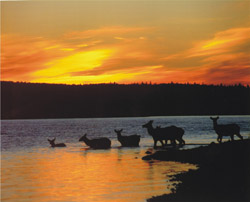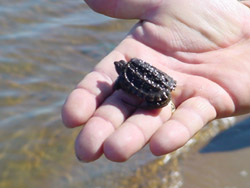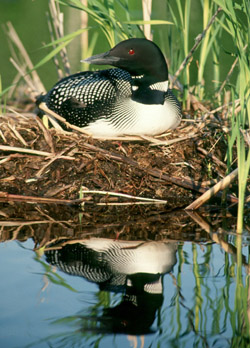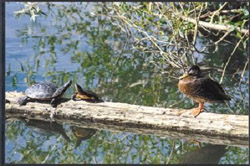Co-existing with Wildlife

Watching the birds and other life that abounds on the water’s is one of the many “perks” of shoreline living. Nevertheless, we generally prefer that wild creatures stay outside of our home. Mice in our pantry, bears in our garbage, or bugs in our beds are all scenarios we would prefer to avoid. By avoiding having to deal with wildlife after they’ve become a problem, you’ll save time, energy and money, and enjoy their presence even more!

While we don’t want wildlife in our homes, helping wildlife while protecting and even enhancing their homes makes sense.
FAQs
- What can I do to provide wildlife habitat on my property?
- What can I do to keep wildlife out of my home?
1. There is a wide range of things you can do. The easiest is to leave as much area as possible natural. If your property has been altered, here are some suggestions:

* Devote an area in your yard to providing a variety of habitat features, including a diversity of vegetation – evergreen and deciduous, young and old, and tall and short.
* Create a number of edges (places where one type of vegetation meets another); remember, jagged edges are preferably to straight lines!
* Create a corridor to provide safe travel paths for wildlife.
* Use leftover materials from building or landscaping projects (like rock or wood)to create wildlife habitat. Do not use old railway ties or telephone poles, or pressure treated wood.
* Protect downed trees which help provide hiding places, feeding grounds, and spawning areas for fish, as well as aquatic insects, birds and mammals. Downed trees also help keep shorelines and streamsides intact by reducing the erosive impact of waves and currents on soil.

* Leave wildlife trees: decaying or dead trees (that are still standing) are wildlife havens.
* Build a brush pile: instead of hauling branches away, or burning them, pile them in the style of a beaver-lodge to provide an instant wildlife sanctuary. Don’t disturb the pile between early spring to early fall when birds may be nesting and using the pile as a safe place to raise their young.
* Diversify habitat with a log pile. If you have logs left over from clearing, or if you bring in wood for a fireplace, consider using a few pieces to create a log pile.
* Build a rock pile: If you have boulders on your property, build a small rock pile in a corner.
* Build a nest box for birds or bats.
* Protect wetlands.
Consider a water based project: Water-based projects to protect shorelines and create wildlife habitat are feasible, but require approvals from DFO and other local agencies. Projects include half logs; brush shelters and log cribs; boulder clusters and rock piles; root wads and brush bundles; artificial reefs; in-stream structures; planting aquatic vegetation like rushes.
Block access points:
Fill any gaps between concrete foundation and walls and install drywall tight to floors. Pay special attention to the areas around plumbing and electrical outlets
Discourage contact:
Trim tree limbs that touch your house. Store firewood well away from buildings or store in a shed. Use yellow light bulbs to discourage flying insects attracted to light at night.
Keep food away:
Use animal proof garbage cans and remove your garbage often. Keep pet food inside and do not leave dirty dishes outside. Store food in containers. Keep barbeque equipment clean and store in a secure area.
Clean regularly:
Wipe down kitchen counters, stove and garbage bins. Keep sink and drains free of food scraps.
Check building details:
Ensure house foundations are made of concrete or masonry. Keep wood posts beams and siding out of contact with the ground, unless protected from decay. Make sure basements and crawl spaces are dry and well ventilated.
